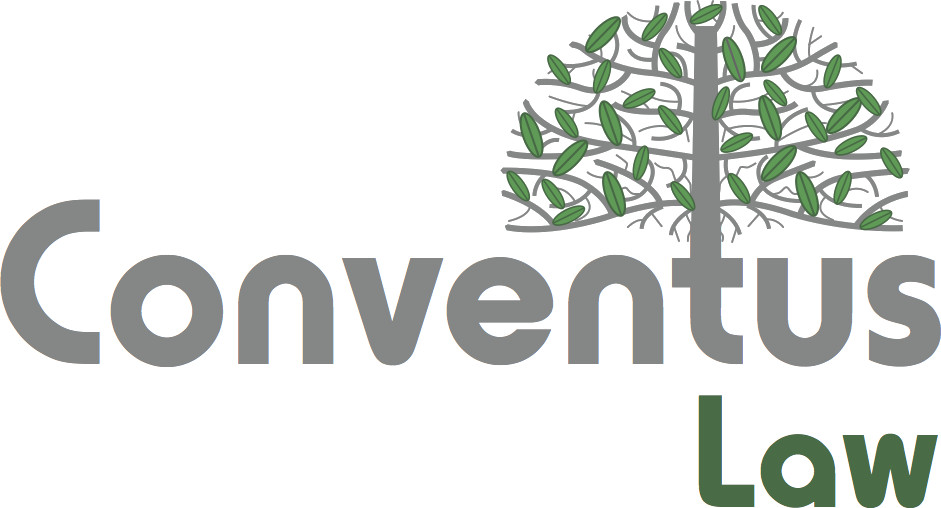On January 3, 2025, the Ministry of Public Security held a press conference in Beijing to report the results of the special crackdown on insurance fraud crimes jointly conducted by the Ministry of Public Security and the National Financial Regulatory Administration and announced ten typical cases. This special crackdown has launched more than 40 nationwide campaigns, filing and investigating over 1,400 insurance fraud cases, dismantling more than 300 professional criminal gangs, with the total amount involved exceeding RMB 1.5 billion, fully reflecting the determination and effectiveness of the police in combating insurance fraud crimes.
This article will focus on the legal provisions of insurance fraud and the ten typical cases announced by the Ministry of Public Security, summarizing the constitutive elements and common case scenarios of insurance fraud, and analyzing the focus of the special crackdown for reference by relevant practitioners.
I. Legal Provisions on Insurance Fraud
Insurance fraud is stipulated in Article 198 Criminal Law under Chapter 3 “Crimes of Disrupting the Order of the Socialist Market Economy”, Section 5 “Financial Crimes”. Therefore, the legal interests protected by this crime are the market economic order in the insurance field and the property rights of the insurer. Specifically, insurance fraud includes the following main constituents:
1. Objective Behavior
Article 198 of the Criminal Law stipulates the following five types of insurance fraud:
(1) Fabricating insurance objects,
(2) Fabricating false causes for the occurrence of insurance accidents or exaggerating the extent of losses,
(3) Fabricating insurance accidents that have not occurred,
(4) Intentionally causing property loss insurance accidents,
(5) Intentionally causing the death, disability, or illness of the insured.
In addition, appraisers, certifiers, and property assessors who intentionally provide false certificates to support others to defraud shall be treated as accomplices for insurance fraud.
2. Subject
The subjects of insurance fraud include individuals and companies. The insured, the policyholder, and the beneficiary can all constitute crimes.
3. Amount
This case is an amount-based crime. Cases involving amounts over RMB 50,000 should be filed and prosecuted. The standards for “large amounts”, “huge amounts”, and “particularly huge amounts” need to be judged in conjunction with the provisions of provincial high courts and procuratorates.
Some provincial high courts have established special amount standard for insurance fraud. For example, Jiangsu provincial rules provide that the amount standard for “large amounts”, “huge amounts” and “particularly huge amounts” for insurance fraud shall be below RMB 100,000, between RMB 100,000-1,000,000, and over RMB 1,000,000. Guangdong, Zhejiang, Tianjin provincial rules provide that the amount standard shall be below RMB 100,000, between RMB 100,000 to 500,000, and over RMB 500,000 respectively. Companies committing insurance fraud would be subject to an amount standard 5 times greater than individual cases.
II. Typical Case Analysis
The ten typical cases of insurance fraud announced by the Ministry of Public Security share the characteristics of professionalism, gang involvement, and full industry coverage. Not only are traditional insurance types such as personal injury insurance and car insurance involved, but also new insurance types such as employer liability insurance, group accident insurance, freight insurance, goods return insurance, and agricultural insurance suffer fraudulent claims. Some crimes have established internal organization, connecting the entire chain of insurance claims, with internal and external collusion. This indicates that with the development of the social economy, the methods of insurance fraud crimes are also “advancing with the times”.
Through the analysis of the above typical cases, we summarize the following new forms of insurance fraud for your reference:
- Using Luxury Cars and High-Grade Car Coats to Fabricate Accidents and Defraud Insurance Money
Many car owners invest heavily in changing the color of their vehicles or purchasing high insurance for luxury cars. Criminals manipulate such luxurious behaviors, buying second-hand luxury cars as prop cars at low prices, creating traffic accidents in places without surveillance at night (Zhejiang Province Hou et al. Suspected of Car Insurance Fraud), or conspiring with car repair shops to fabricate repair receipts and payment records for high-grade car coats to defraud insurance money (Guangdong Province Luo et al. Suspected of Car Coats Insurance Fraud).
Unlike traditional car insurance repeated claims, this type of luxury car insurance may stipulate a higher compensation amount in the insurance contract. Also, there do exist luxurious consumption behaviors in luxury car market, making the fraudulent behaviors highly concealed. Criminals can fabricate a few accidents and defraud huge insurance amounts. The abovementioned car coat insurance fraud case involved an amount of over RMB 9 million, manifesting the seriousness of such fraud.
2. Using E-commerce Platform Return and Exchange Rules to Defraud Insurance Money
Many large e-commerce platforms provide insurance services such as freight insurance and goods return insurance to compensate for the cost of goods returns and repairs after online shopping. However, criminals exploit the loopholes in such insurance claims, using new insurance types or “extended warranty replacement” rules, playing various roles in different places to fabricate returns and exchanges to defraud insurance money (Fujian Province Cai X Wen Suspected of New Types of Insurance Fraud).
This case shows that insurance fraud has closely followed the development of the insurance industry, exploiting claim loopholes in new types of insurance to defraud insurance payouts. Such new types of insurance are typically provided by insurance companies affiliated with e-commerce platforms who may lack sufficient experience in dealing with insurance fraud. Following the pursuit of efficient claim reviews driven by the service-oriented mindset of e-commerce platforms, these insurance companies could easily fall into the traps set by criminals.
3. Using Employee Injury to Defraud Insurance Money
Employer liability insurance is a kind of commercial insurance that covers the legal liabilities of employers to employees. The insured are usually employees in high-risk industry, and the employers desire to limit their liability in the case of work-related injuries.
However, the compensation for employer liability insurance usually relies on the compensation agreement reached between the employer and the employee, which leaves room for criminal behaviors. Some criminals exploit existing work injury incidents and induce employees to sign deceptive compensation agreements to defraud insurance payouts (Jiangsu Certain Plastics Company Suspected of Employer Liability Insurance Fraud). Others use low premiums as bait to induce high-risk industry companies to authorize the criminals to purchase employer liability insurance on their behalf. In the case of an incident, the criminals fabricate compensation agreements, receipts, or exaggerate losses and make repeated claims to defraud payouts (Anhui Lu et al. Suspected of Employer Liability Insurance Fraud). Some criminals even maliciously exploit injured employees after handling claims, embezzling and withholding the compensation funds, which seriously infringed the rights and interests of the insured and beneficiaries (Sichuan Du et al. Suspected of Employer Liability Insurance and Group Accident Insurance Fraud).
4. Defrauding Insurance Premiums Under the Pretext of Free Insurance
To promote insurance products, insurance companies usually agree to certain commission rewards for insurance brokerage companies. Some insurance brokerage companies exploit loopholes in contract terms, making false promises and recruiting members under the disguise of first year premium free. Later, the criminals provide the initial premium by themselves and induce the members to fabricate policyholder information and insurance intentions by recommending 30-year term life insurance to their family, friends, and acquaintances. In doing so, criminals exploit the “first-year commission higher than the first-year premium” clause in the brokerage cooperation agreement with the life insurance company to defraud high commissions. The amount involved is as high as RMB 1.2 billion (Beijing Certain Insurance Brokerage Company Suspected of Insurance Commissions Fraud).
5. Repeated Insurance and Claims Exploiting Data Policy of Insurance Companies
Two typical cases involving personal accident insurance fraud exploited the lack of data sharing between different insurance companies. Criminals repeatedly purchase personal accident insurance from multiple insurance companies, fabricating hospitalization records, medical records, or accidents to defraud claim payments (Shanghai Li X Hong et al. Suspected of Personal Injury Insurance Fraud, Shandong Hou X et al. Suspected of Personal Injury Insurance Fraud). These cases took advantage of the loopholes in insurance companies’ review processes for small claims, using repeated insurance and repeated claims to defraud substantial compensation payments.
6. Agricultural Insurance Fraud
With the development of modern agriculture, some large farms may insure their livestock. After insuring with multiple insurance companies, criminals intentionally cause the death of the livestock and conspire with the insurance company’s claims adjusters to fabricate inspection sites, defrauding agricultural insurance compensation (Xinjiang Zhang et al. Suspected of Agricultural Insurance Fraud).
III. Focus of Insurance Fraud Crackdown
Through the analysis of the above cases, we can find that the focus of the police authority in combating insurance fraud crimes mainly includes the following aspects:
1. Focus on Cracking Down Gang-related and Professional Insurance Fraud
The ten cases announced are all committed by organized groups, covering the entire process of insurance underwriting, brokerage, and claims handling. Criminals designed meticulous schemes to target every stage of the insurance claims process. Some cases involve collusion with employees of the insurance industry to jointly defraud claim payments.
As criminal activities cover the entire insurance claims process, the materials submitted to insurance companies for claims are usually complete and comprehensive, significantly concealing the criminal activities and increasing the difficulty of the insurance companies to review these fraudulent claims.
In response, the public security authorities, in coordination with financial regulatory departments, have organized industry-wide inspections and efficient collaboration. They have established over 500 cooperation mechanisms and built more than 220 integrated anti-fraud collaboration platforms, providing strong support in information sharing, lead coordination, and case investigation. These efforts have effectively enhanced the efficiency and capability in investigating organized and professional insurance fraud cases.
2. Expanding the Scope to Cover All Insurance Types
Apart from traditional personal accident insurance and auto insurance, the special crackdown also focuses on innovative insurance such as employer liability insurance, freight insurance, goods return insurance, and agricultural insurance, as well as fraudulent activities by insurance brokerage companies to obtain commissions.
Driven by the need to promote their products, insurance companies may prioritize claims efficiency or sales performance over strict review standards, consequently falling into the scam of the criminals. Therefore, public security authorities and financial regulatory departments work closely together, keeping track of the latest developments in the insurance industry, and precisely targeting frauds related to innovative insurance products and high commissions. This effectively purifies the insurance market environment and maintains the order of the financial market.
3. Using High-Tech Means to Crack Down on Repeated Claims
The announced cases of personal accident insurance fraud involved multiple policies and repeated claims. Criminals exploited the lack of information sharing between small and medium-sized insurance companies or internet insurance companies to defraud claim payments, a situation that can be accurately identified through big data screening.
Li Youxiang, Director of the Inspection Bureau of the National Financial Supervision and Administration, stated at the Ministry of Public Security’s press conference that the Financial Supervision Administration will establish an anti-fraud action plan of “data aggregation—big data modeling—clue identification.” This will guide financial regulatory departments at all levels to strengthen the construction of collaboration mechanisms with public security authorities, refine collaboration content, and solidify the foundation for the coordination of administrative and criminal enforcement, continuously improving the insurance fraud risk management system. This indicates that financial regulatory departments will further employ technology to enhance the ability to identify criminal clues, providing significant support and assistance to public security authorities in combating insurance fraud crimes.
IV. Summary
Our team has also handled multiple insurance fraud-related cases. For example, a foreign enterprise and a Chinese company conducted “trade in name, financing in reality” transactions while taking out trade credit insurance. When the counterparty failed to repay, the foreign enterprise applied for trade credit insurance claims, obtaining huge insurance compensation. The court ruled that the foreign enterprise knowingly fabricated insurance objects, committing insurance fraud.
We advise all companies to pay special attention to whether the insurance types match, whether the insurance content is genuine, and whether the claims are legal and compliant when insuring and claiming, to avoid falling into the scope of criminal regulation of insurance fraud.
Through the above analysis, we can find that insurance fraud has severely disrupted the order of the financial market. The organized and professional nature of such crimes not only causes significant losses to insurance companies but also affects the legitimate claims of ordinary policyholders. Our team will promptly track typical cases and enforcement updates related to insurance fraud to provide you with more professional legal services.

For further information, please contact:
Ding Min, Partner, Anjie Broad Law
dingmin@anjielaw.com
- The Ministry of Public Security held a press conference to report on the effectiveness of the joint deployment of the Ministry of Public Security and the State Administration of Financial Supervision to carry out special measures to crack down on insurance fraud, https://www.mps.gov.cn/n2254536/n2254544/n2254552/n9908722/index.html
- Article 51, Supreme People’s Procuratorate and Ministry of Public Security Regulation on the Filing and Prosecution Standard for Criminal Cases within the Jurisdiction of Public Security.
- See Jiangsu Provincial High People’s Court, Jiangsu Provincial People’s Procuratorate, Jiangsu Provincial Department of Public Security released Meeting Minute for Enhancing Management of Economic Crimes.
- See Guangdong Provincial High People’s Court Guiding Opinion on Relevant Specific Issues Relating to Managing Crimes of Disrupting the Order of the Socialist Market Economy; Zhejiang Provincial High People’s Court Opinion on the Sentencing Conditions and Amount Standard for Certain Crimes; Tianjin Municipal High People’s Court, Tianjin Municipal People’s Procuratorate, Tianjin Municipal Department of Public Security, Tianjin Municipal Department of Justice released Opinion on the Amount Execution Standard and Sentencing Conditions Standard for Certain Crimes under the Criminal Law.
- Employer Liability Insurance Disputes: Can Third Party Claim Insurance Pay?, wechat public account “Shanghai High Court” article published on March 6, 2025.
- Ibid. at n 1.
- Ibid.





